The Vikings were notorious fighters for a couple of reasons. One of the main reasons, however, is the elaborate arsenal of Viking weapons. Although many of these weapons were just former farm tools, eventually they developed into something far more deadly. From the point that the Scandinavian people started to perform raids onwards, these tools became weaponry.
Table of Contents
Viking Weapons: What Kind of Weapons Did the Vikings Use?

Among the most prominent Viking weapons are axes, knives, swords, spears, lance, as well as bows and arrows. The axes and knives were prevalent among all social orders, while some other weaponry was more elite. Viking armor was also well-developed and included shields, helmets, and chain mail (a sort of body armor).
We know quite a bit about Viking weapons because they are often found in archeological excavations. Archaeologists find weapons in graves, lakes, old battlefields, or old fords. Reasons why these weapons are in abundance relate back to the warrior-minded nature of the Vikings, their history of farming, as well as the warrior-minded nature of their neighbors.
Archaeological data show that there are far more weapons found than body armor. Does this mean that the Vikings didn’t use body armor? It’s of course not very likely that only the minority of the Vikings carried armor, which also implies that prevalence in archeological findings is not necessarily an indicator of the usage rates among the Vikings.
Still, the Berserkers – who were highly ecstatic and extravagant warriors that couldn’t feel pain because they ingested herb mixes – are believed to have fought naked as part of their psychological tactics. So at least some Vikings did not use armor after all.
What is the Most Powerful Viking Weapon?
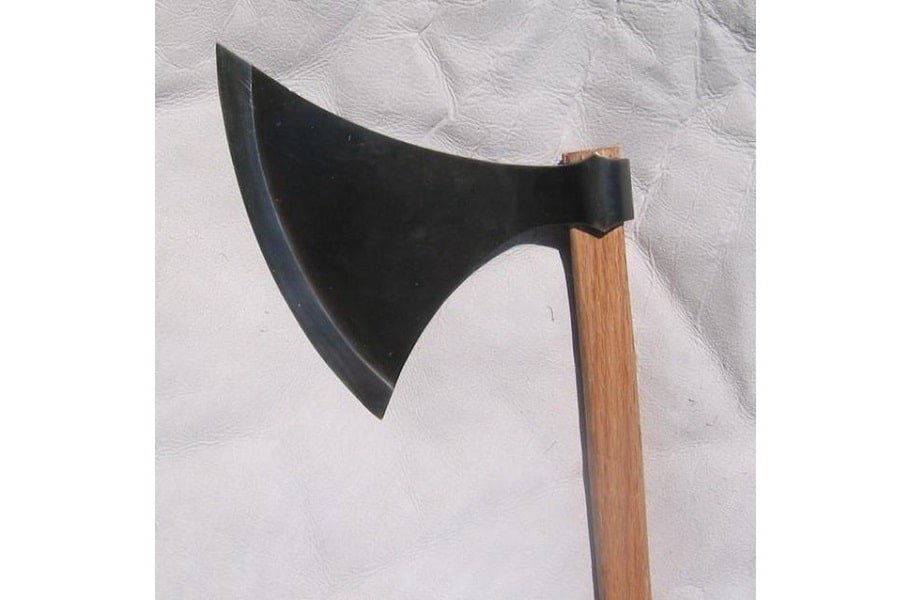
The Viking axe was probably the most powerful Viking weapon for a couple of reasons. The first one has to do with its design. Some of the most used axes were shaped in a way that they were functional for both offense and defense. Also, an axe was the weaponry that was used on a large scale, in all layers of society. In terms of the overall damage it could do, the axe is the most powerful weapon.
What Made Viking Weapons So Effective?
Viking weapons came in many different shapes and sizes. While you might think the Vikings just randomly landed somewhere and raided the place, nothing is further from the truth. The Viking leaders were excellent warriors and were known for their elaborate tactics. The effectiveness of every weapon was increased because of their optimized usage during the attack.
The Viking Axe: Viking Weapons for the Masses
Perhaps the most popular of all Viking weapons was the axe. The average Viking carried an axe with him all the time, but not always for the sake of battle. In medieval times, wood was the material of choice for constructing basically everything. This also resulted in a wide array of axes that were originally developed and specialized for cutting different types of wood.
The wood was mostly used for constructing things like ships, carts, and houses. Or simply to keep the fire burning. So, the axes were originally used for practical purposes. They helped the Vikings settle down and build their houses, becoming some of the most important tools in Viking life in the process.
When the Vikings started to engage in different wars, the Viking axe was a logical weapon of choice as everyone was already in possession of one anyway.
These axes were light enough to handle with one hand, but also strong enough to injure the enemy severely. Because of their ample use, the Viking axes have been found in many warrior graves, both the simple ones and the more elaborate ones.
Originally, the axe heads were made of stone. Later on and with the development of new techniques, the axe heads came to be made of iron and metal. The real distinction between the different axes can be seen in their decoration. Some of the most popular ones have been decorated with inlaid silver and show intricate animal-like patterns.
Design of the Viking Axes

The poorest men used their farm axe on the battlefield, but there was definitely a difference between a farm axe and battle axes. For one, because the axe heads were made of a different material. Besides, farm axes were sometimes double-edged, while battle axes were almost exclusively single-edged Viking weapons.
You might assume that two edges on a battlefield might be more useful. However, the point of using the axe was to do as much damage as possible. By making one side heavier than the other, the hit of the axe would land harder.
To enable this effect, the side without an edge was normally shaped like a diamond and rather heavy. Other than that, the heads of the axes had a central hole and a spiral-shaped cross.
Battle Axes of the Vikings

There are generally two types of axes that were specifically made for battle. These were the Danish Axe and the Bearded Axe.
The Danish axes were insanely thin for their size, which meant the Vikings could carry around quite big weapons that didn’t weigh too much. Some of the findings are larger than one meter and probably wielded with two hands. The Danish Vikings especially liked to make use of this particular axe, hence the name.
The bearded axe is recognizable because of its blade design. The design was beneficial in several ways. For starters, the extended edge declined down well below the pole, so the cutting edge of the axe was significantly longer from toe to heel. The part that is below the central hole is often named the ‘beard’, which explains the name of the axe.
These Viking weapons enabled the user to chop and tear with tremendous force. However, it was also a great defensive weapon. The beard could simply be used to snatch out the opponent’s weapon.
The armor of the attacking party was also vulnerable to the beard of the Viking axe. A shield was easily pried out of the opponent’s hand, whereafter the sharp edges did the rest.
The Mammen Axe: An Extraordinary Example

Archeologists are in agreement that the Mammen axe is one of the most magnificent Viking weapons from medieval times. It is one of the best preserved pieces and the intricate patterns at the blade of the axe look like they were engraved yesterday. The style of the axe is given the same name as where the original axes were found: the Mammen motif.
The Mammen motif style started to be seen on Viking weapons around the 9th century AD and only survived about a hundred years. The patterns are a combination of pagan and Christian motifs. Or rather, researchers are not sure whether they were a reference to pagan gods or Christian god.
One side of the blade shows a tree motif, which can be interpreted as the Christian Tree of Life or the Pagan tree Yggdrasil. On the other side, the animal figure could either be seen as the rooster Gullinkambi or a Phoenix.
On the one hand, the combination of the tree Yggdrasil and the rooster Gullinkambi makes sense because the rooster sits on top of the tree in Norse mythology. It woke the Vikings every morning and also gave the occasional heads-up when the end of the world was near.
On the other hand, the Phoenix in Christian mythology is a symbol of rebirth. Since the Tree of Life also makes its appearance, the motifs really could represent either of the two religious schools.
Especially because between the years 1000 and 1050, most Vikings converted to Christianity. Therefore, there is uncertainty about the actual meaning behind the different symbols.
Viking Swords: Weaponry of Prestige
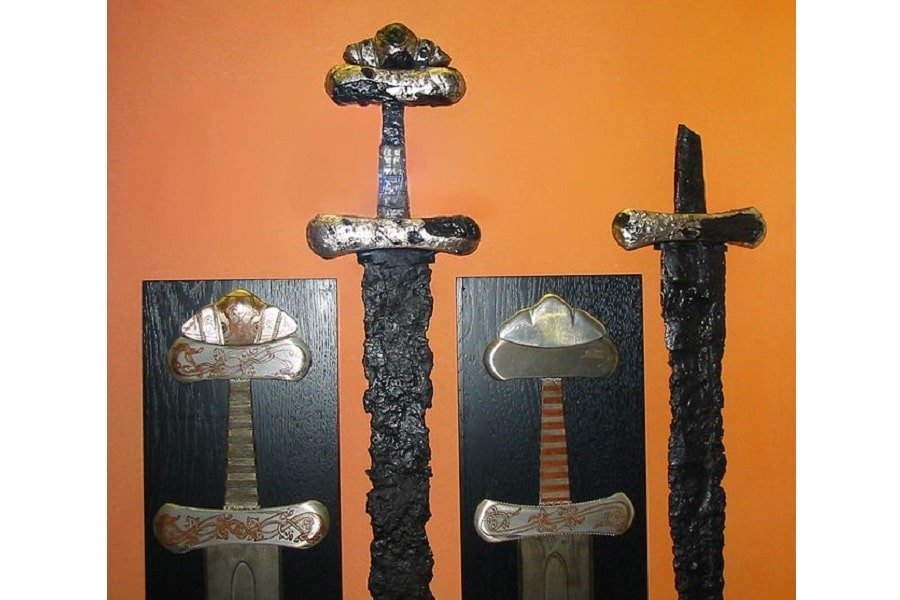
The swords that Vikings used were just under a meter long and double-edged. The longest piece that was discovered is dated to the 9th century and has a length of 102,4 cm and a mass of 1,9 kg. Many Viking swords were imported from the Frankish empire and only a few were made by the Vikings themselves.
The swords had a hardened edge and were made out of iron. The lower part of these Viking weapons is called a hilt; basically the part where you have your hands when holding the sword. The hilts of the Viking swords were made of various different materials, including precious metals like gold and silver.
However, the Vikings had domesticated many animals and always used every part of them. The bones of the animals were a good and strong material, which was sometimes used to make the hilt of the swords.
The pommel – the counterweight to the blade that is located at the end of the hilt – often had ‘blood grooves’ engraved in it. The pommel also was made of precious metals, but the grooves made sure that some precious material was saved while making the sword lighter.
Besides the grooves, the Vikings wrought iron strips and steel on the blades in different forms to decorate them. Such pattern-welded Viking swords were quite common, mainly for the aesthetics that increased the value of the sword. These patterns can be found all over the swords, from the blade to the hilt to the pommel.
Did Vikings Use Swords?
Because everything was made of valuable material, Viking swords were seen as a prestige weapon; only the Vikings of the highest status had them in their possession. They were highly valued objects and normally passed down from generation to generation. Sometimes valuable swords were even sacrificed during religious rituals. While the swords were definitely used in battle, they were more so a status symbol.
Why specifically the sword became a status symbol is not entirely clear. Some argue that it is rooted in the story of Offa of Angel, who is the son of the Danish king and one of the most memorable persons that present themselves in Danish legends.
Long story short, Offa’s father had buried a sword called Skræp underground and thought it might come in handy for defeating the Saxons. Offa dug up the sword and used it in battle to eventually kill all the opposing parties. The story speaks to the importance of the sword as a weapon, to the point that the swords would even be named regularly by their owners.
Outside them being named and decorated, there was another tradition surrounding these Viking weapons. Different types of Viking swords were thrown in lakes and bogs as a form of sacrifice. Because some important Norse gods used the sword as a weapon, sacrificing one was seen as a sign of honoring the gods.
Different Viking Swords
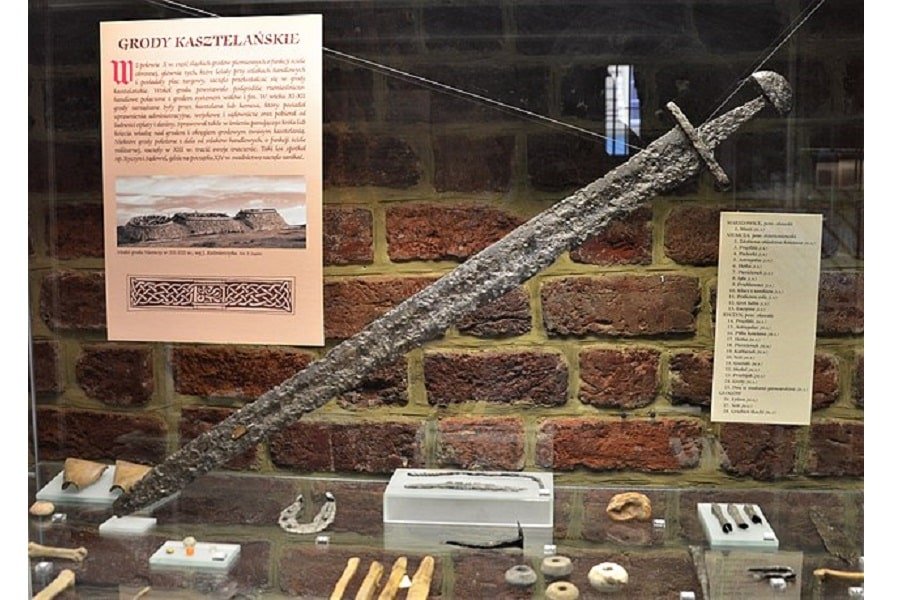
What can be said with certainty is that the Vikings did not use a two-handed sword. They only had one-handed swords which they used in combination with their Viking shield. Also, all of the blades of the sword were double-edged.
There are many discrepancies between the swords, which also means that there are many different categories of swords. For example, there are more categories of Viking swords distinguished in Peterson’s typology than there are letters in the alphabet: 27 in total. Peterson makes his distinction purely on the hilt and the pommel of the weapons.
However, there are ample other classification systems, like Oakshott’s Typology and Geibigs classification. How exactly the swords are distinguished is based on the criteria you adopt: the shape of the hilt and pommel, or the exact length of the blade? Or would you rather make a distinction based on the material that is used?
Ulfberht Swords

The finest sword blades that the Vikings used were imported from the Rhine area; a river that runs through contemporary Germany and the Netherlands. These blades, known as the Ulfberht blades, were quality blades and were considered to be the best swords of the time.
Their high-quality steel ascertained smooth use in battle and allowed for easy inscriptions. The blades were named after his maker Ulfberht. This man produced the blades during the 9th century in the Frankish empire.
However, the production of the Ulfberht swords continued long after their creator had died. The demand for the blades came from all over the world, to the point that the Frankish empire placed a ban on its export. Of course, this affected the Vikings’ access to the popular blades.
Soon, copies were made in neighboring parts of the Frankish empire and the Vikings were eager to use them. Eventually, they even started using them to attack the very Frankish empire that initially provided them with valuable blades. The copycats were, however, of significantly lower quality.
A total of 300 swords have been found in Viking territory that are identified as Ulfberht swords. However, many of them turned out to be fake. The most obvious difference between the two is that the real blades have the inscription +VLFBERH+T, while the fakes have +VLFBERHT+.
Other Notable Swords

There were some swords in particular that gained some notoriety or fame over the years. The first one is the Sæbø sword, which was found in 1825 in Norway’s Sogn region.
The inscriptions of the authentic piece are particularly notable because they are written in the runic alphabet; an ancient alphabet that was used by the Germanic people. The Sæbø sword was the only formidable weapon that was discovered with a Runic inscription whereas all other blades had Latin inscriptions.
Another interesting weapon was that of Saint Stephen, which had a hilt made of walrus tooth. In the Essen Abbey, there is another interesting piece that is preserved to this day. It has fully gold plating and was created somewhere in the 10th century.
Lastly, one of the most extraordinary swords discovered from the Viking age was recovered from the River Witham in 1848. According to archeologists, the sword is breathtaking and the only one with the inscription +LEUTFRIT. It has a double scroll pattern and is generally considered ‘one of the most splendid Viking swords extant’.
Bow and Arrow: From Hunting to Fighting
The next in line of Viking weapons are the bow and arrow. While they were originally used for hunting animals for special feasts, the effectiveness of bow and arrow in raids couldn’t be overlooked.
The Vikings quickly discovered the benefit of striking from a distance and started to use the new weapon. On average, skilled archers could shoot up to twelve arrows within a minute. Since all of the twelve arrows had spearheads strong enough to penetrate the enemy shield, a lot of damage could be done before engaging in a man-to-man battle.
Type of Bows and Arrows
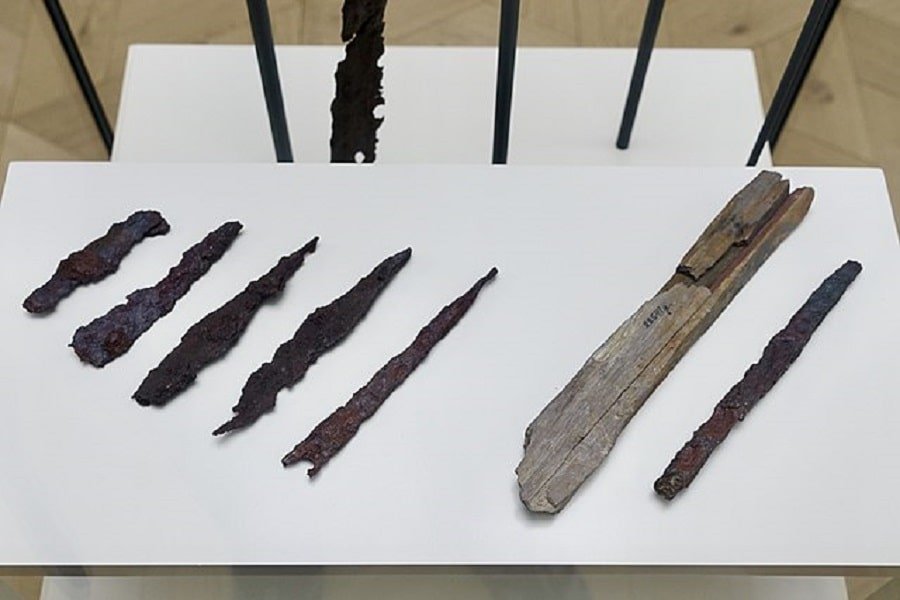
While not every Viking carried a bow and arrow, they certainly made a big impact on the battlefield. These Viking weapons were used during the whole span of the Viking age.
One of the first bows used by the Vikings is often seen as a medieval ‘longbow’. It was around 190 cm long and had a ‘D’ cross-section. The middle of the D section was made of hard heartwood, while the outside of the bows was more elastic to account for the flexibility of the string.
Some of the bows that have been found in 1932 during an excavation in Ireland are nearly fully intact. The versions that were found go by the name Ballinderry Bow, named after the city where it was found. Also, some examples have been found in the most important trading town of the Vikings: a German village named Hedeby.
Birka Settlement Sweden
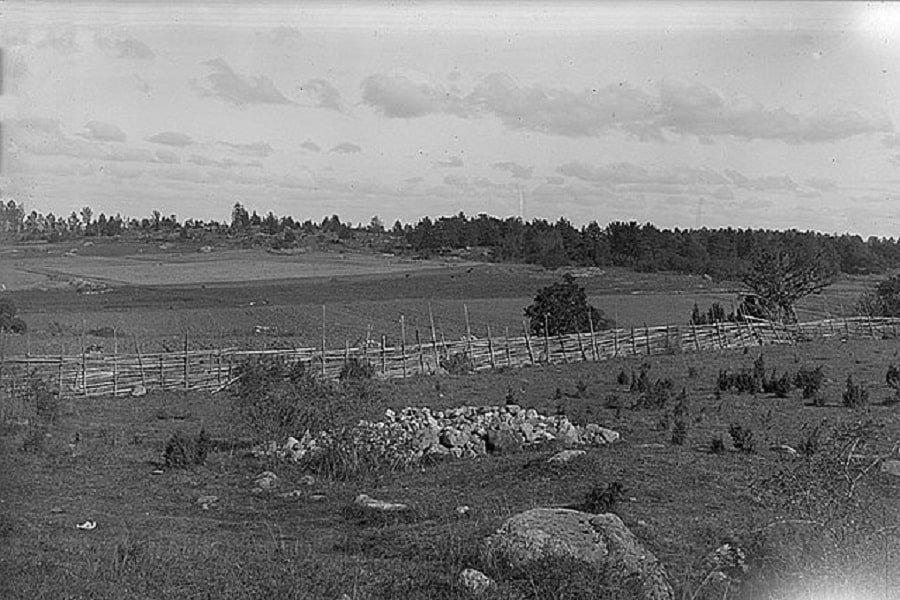
One of the Viking settlements that tell us a fair bit about bows and arrows is the Birka one in Sweden. It was an important trading town in northern Europe, with traders from even the Middle East coming over to sell their goods.
Many bone fragments and other archery-related items were found after excavation. However, these items did not originate in Scandinavia. Most of the bone plates and spearheads that were found can be traced back to the Byzantine Empire.
In that sense, the archeological evidence suggests that the Vikings obtained their bows and arrows from distant populations rather than making them themselves.
Spears as Viking Weapons
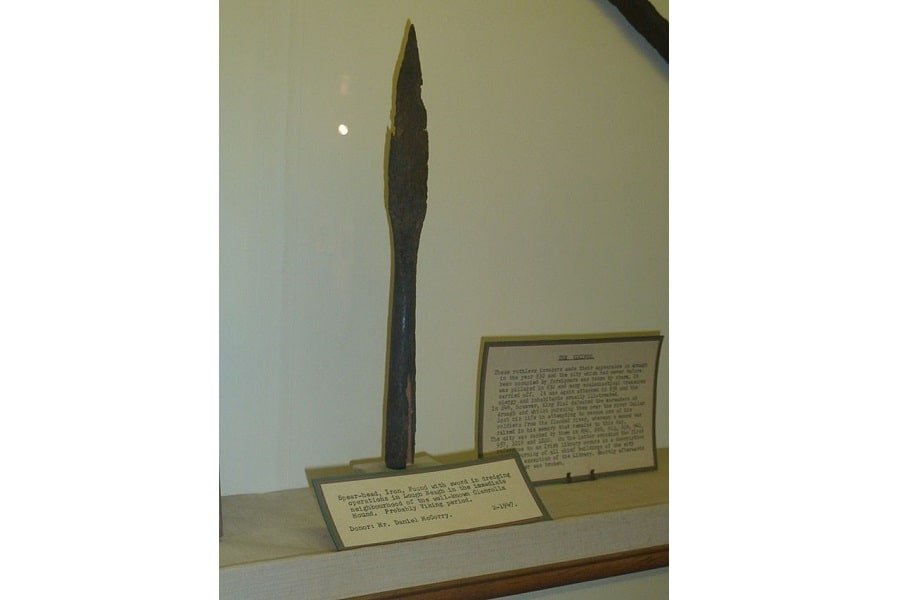
While spearheads worked well with the bow and arrow, just a normal spear was also used as a weapon through all layers of society. It was especially common in the peasant class, but the spear was also a principal weapon of the Viking warrior.
Generally, the spear had a great cultural significance to the average Viking warrior since it was the main weapon of Odin – the main god of warfare in Norse mythology.
The usual spears of the Vikings were two to three meters long and made from ash wood. The spearheads became longer over time. Towards the end of the Viking age, the spearheads could measure up to 60 centimeters.
The spear was used both for throwing or stabbing the opponent. The lighter spear with a more narrow spearhead was made for throwing, while the heavier and broader ones were generally used for stabbing.
What Was the Vikings’ Favorite Weapon?
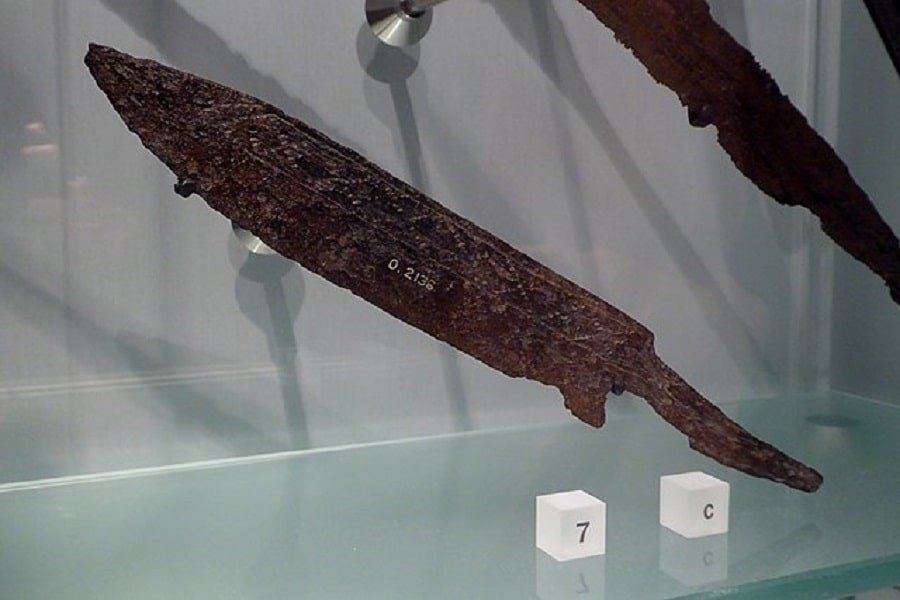
Besides the axe, the most common Viking weapons that were used were called the seax – sometimes called ‘scamasax’ or ‘sax’. Actually, the seax is believed to be the weapon that was used by most people; even slaves were allowed to carry one. The knife was used for many everyday tasks, like cutting fruits or skinning animals. However, it also had an important function on the battlefield.
The seax was mostly used as a self-defense weapon in everyday life. The spear-point type of blade could be between 45 and 70 cm long and was only edged on one side. Their use on the battlefield was also widespread, albeit only as a backup to the other Viking weapons.
Because of the pointed shape of the seax, a blow from the knife could cause severe internal injury to opponents even when they were wearing armor. The seax was worn upright in the sheath on their belts so that it could be easily pulled out when needed.
Because the knife was normally quite thick and heavy, it was rather unsuitable for delicate work. Plain chopping at your opponent was the only way to go with the seax.
Seax of Beagnoth
Perhaps the most famous seax ever found is currently displayed at the British Museum. The knife is 61 centimeters long and intricately decorated with all types of silver and brass, as well as with copper inlaid geometric patterns. The Seax of Beagnoth is one of the few examples that was found with a full runic alphabet displayed.
Viking Armor
Viking weapons came in handy on the offensive side of the Viking battles. However, Viking armor was also known to be very effective on the defensive end. The Viking warriors used a couple of different items that functioned as a mode of defense.
What Did Viking Armor Look Like?
While many myths show a Viking helmet with horns, it is actually unlikely that any Viking wore a helmet with horns during battle. They did wear an iron helmet, however, which covered their head and nose. Their shields consisted of thin planking, which formed a circular shape. In the middle was a dome of iron protecting the shield bearer’s hand. For body armor they wore chainmail.
Viking Helmets
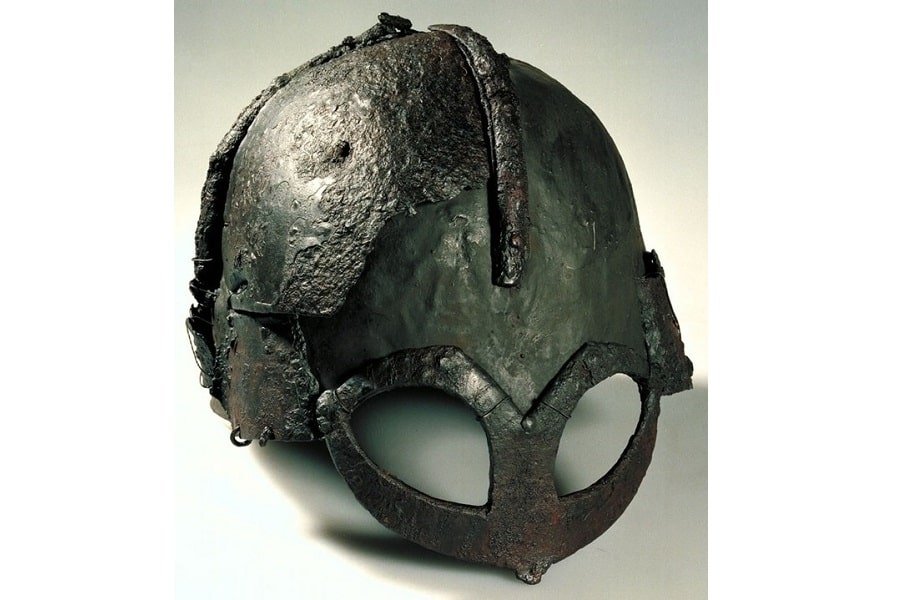
Believe it or not, there is only one completely preserved helmet from the Viking age. It’s called the Gjermundbu helmet and was found in a Norwegian Warrior’s burial site north of Oslo. It was found together with the only complete suit of chainmail that survived from the Viking age.
Still, some partial helmets have been found in different places. Many of these findings included ‘brow ridges’: a sort of protection for the warrior’s face in battle. The reason for the lack of helmets might be that there was no burial ritual related to them.
While most burial sites contained large numbers of weapons, the armor was simply not often buried with the warriors themselves. Also, these helmets were not sacrificed to the gods, something that was seen with Viking weapons.
Another explanation can, of course, be that relatively few Vikings wore helmets.
Is There Evidence That the Vikings Wore Horned Helmets?
Some ancient Viking depictions show horned Viking figures, which suggests that the Vikings actually wore horned helmets. Historians assume these figures to be either berserkers or people dressed up for certain rituals. But realistically, and contradicting popular belief, only their function in ceremonies seems to be a viable one.
The helmets with horns simply wouldn’t be very useful in battle. The horns would get in the way during the battle and they would also take up a lot of space on the relatively tiny Viking warships.
Viking Shield
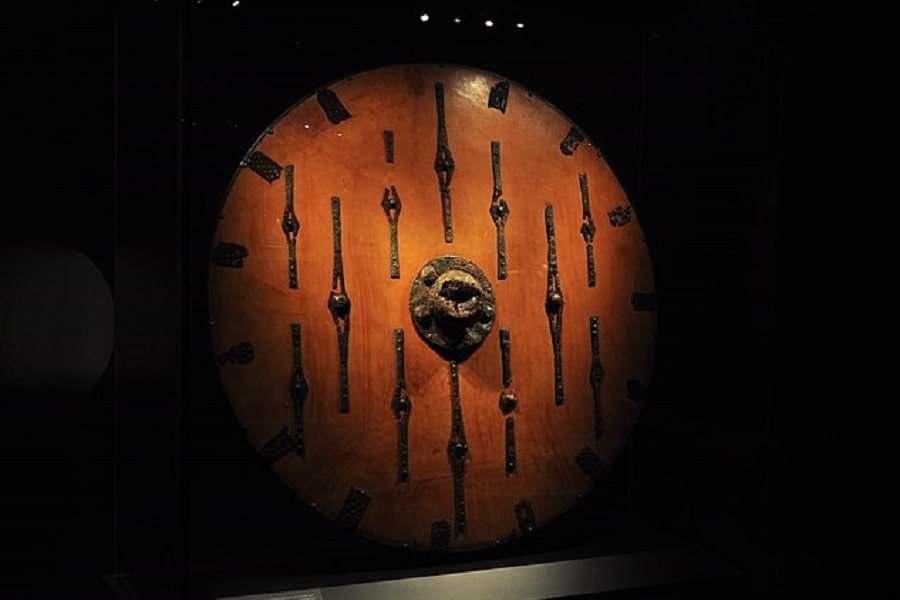
The Viking shield originates from the Iron Age and consists of thin planking that forms a circular shape. While wood didn’t provide as much protection as iron or metal, the shields that the Vikings carried did the job for the medieval population.
The hand of the shield bearer had an extra protection layer in the form of an iron dome, normally referred to as a shield ‘boss’. Because it was made from iron rather than wood, it is often the only part that is preserved from the shield.
Luckily, the shield boss tells a lot about the age and shape of the ancient shields. As opposed to helmets, shield bosses are often found in graves beside the other Viking weapons.
Remarkable Finds
One of the most remarkable shields that have been found is the one at Trelleborg in 2008. Archeologists uncovered almost a complete shield made out of pinewood, with a diameter of around 80 cm. It was found in waterlogged conditions, which explains why it has been preserved to this day.
Or well, maybe it was not a full shield. Ironically, the only thing that was missing was the shield boss. While the scientist did search for it, only the wooden remains and the grip of the shield were found.
Still, the most impressive collection of complete shields was recovered at a burial site in Gokstad, Norway. A ship was buried at the place, together with an important person – probably a prince or king – and a myriad of grave goods. A total of 64 shields were recovered, all painted with yellow and blue paint.
So why is the Viking shield of Trelleborg considered more remarkable than the 64 shields in Gokstad? It has to do with the quality of the shields. The Viking shields that were recovered in Gokstad were quite fragile and could be destroyed with an arrow, axe, or sword.
The theory for now is that the tinner shields as found in Gokstad were normally covered with animal skin to make them stronger. However, these skins vanished over time. The only real wooden battle shield found in its complete form is, therefore, the one in Trelleborg.
The Berserker and the Lack of Armor
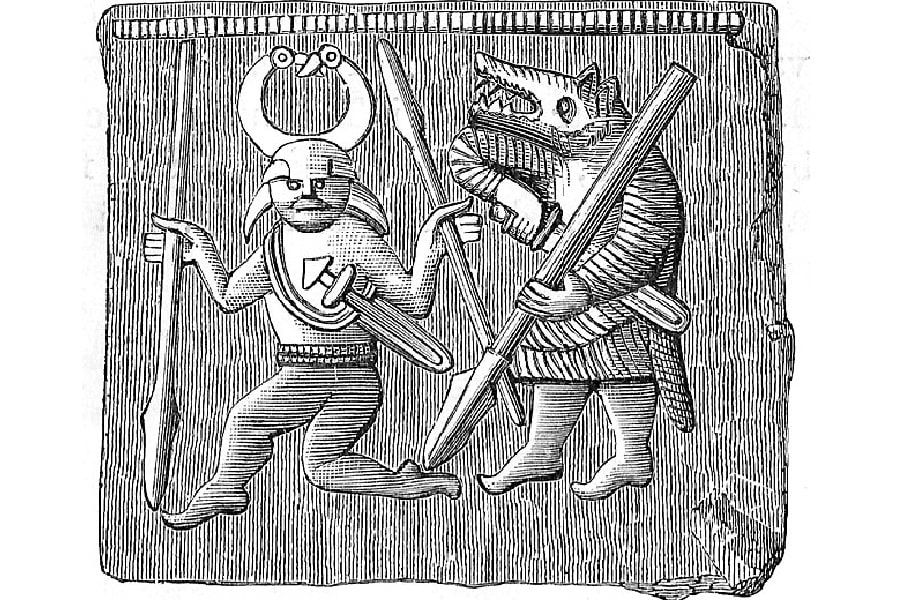
Lastly, what deserves to be mentioned is the lack of armor among the Viking warriors that go by the name Berserkers. Because of a certain type of Henbane mix that the Vikings would drink, they acted like wild animals.
This sometimes came in handy during war, because of the endless rage that would emerge. In the process of raging, the Berserkers threw off their armor and ran around completely naked.
Several sagas recall the Berserkers as warriors that were possessed by a demon, which sometimes could lead to one naked warrior killing 40 opponents without being killed himself. Some sagas even record that they’d form whole combat groups that fought in the same bloodthirsty manner.
So while the Vikings carried their armor and weapons, the most legendary stories come from the ones that weren’t wearing any body armor at all.